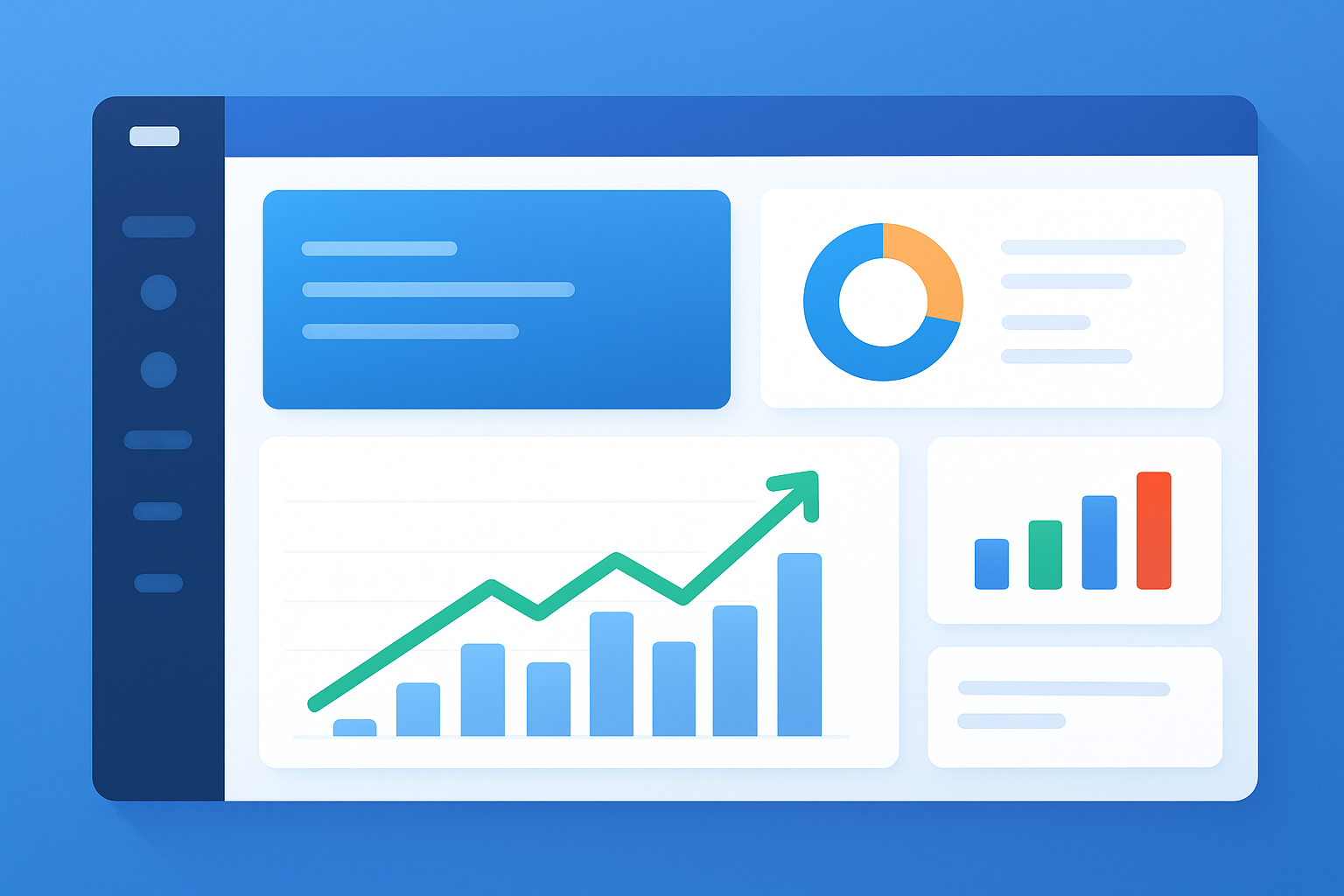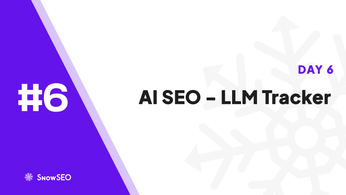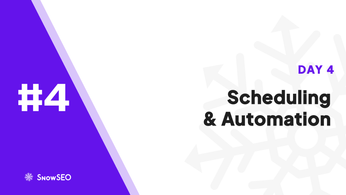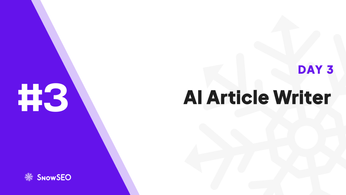
Case Study: CMS Impacts on SEO Success
Table of Contents
Discover how your choice of CMS can make or break your SEO success. Search engines index code, speed, and structure long before a human sees your beautiful design, and the platform underpinning your site silently dictates each of those variables.
Many businesses struggle to connect CMS features and their SEO performance. They migrate to flashy all-in-one builders, only to watch page-speed scores plummet and organic traffic flatline. Others cling to legacy stacks that throttle Core Web Vitals, bury schema markup, and hide critical crawl paths. The result? Rankings stall while competitors surge ahead.
This case study reverses that frustration. You’ll unpack real-world migrations-from WordPress to headless, Wix to custom stacks-and see exactly which technical levers moved the SEO needle. We pair these stories with actionable checklists, a CMS feature comparison chart, and bite-sized expert interviews so you can replicate the wins without repeating the mistakes.
Insights backed by recent data and frontline strategists will equip you to choose, configure, or even abandon your CMS with confidence.
Overview of CMS Platforms and SEO
Choosing the right CMS for improved SEO is like setting the foundation for a skyscraper: every later optimization depends on that first decision. A modern CMS controls site architecture, schema generation, and even how quickly Google can render your pages. Below we unpack the core elements that tie platform choice to search performance.
Key Features of CMS that Impact SEO
- Native Technical Controls
- Editable title tags, meta descriptions, and canonical URLs
- Built-in XML sitemap generation
- Automated schema markup for products, events, and FAQs
- Performance Optimizers
- Server-side rendering or static site output
- Image compression and next-gen formats
- Critical CSS and script deferral to hit Core Web Vitals
- Content Governance
- Modular blocks enabling semantic heading hierarchy
- Version control and staging to avoid accidental 404s
- Multilingual routing with hreflang automation
- Extensibility & Ecosystem
- SEO plugin marketplace
- API access for headless or composable builds
- Active developer community for rapid issue resolution
Pro tip: A CMS that lets you tweak robots.txt and .htaccess without developer tickets saves weeks during migrations.
Comparison of Popular CMS Platforms
| CMS Platform | SEO Strengths | Common Pitfalls | Ideal Use Case |
|---|---|---|---|
| WordPress | Huge plugin library, clean permalink settings, broad community support | Plugin bloat can slow TTFB; needs managed hosting for security | Content-heavy sites and blogs scaling quickly |
| Wix | Visual editor auto-generates structured data; built-in caching | Limited control over server configuration; custom code sandboxed | Small businesses needing fast launch with minimal dev work |
| Squarespace | Automatic image CDN, solid SSL setup, intuitive meta field UI | No access to robots.txt; limited advanced schema | Portfolio and boutique e-commerce stores |
| Shopify | Native product schema, lightning-fast global CDN | URL structure locked, duplicate /collections/ paths | Retailers prioritizing transactional SEO |
| Drupal | Granular role permissions, multisite, excellent multilingual modules | Steeper learning curve; requires dev hours for updates | Enterprises with strict governance and security policies |
Bulletproof SEO demands matching platform strengths to business goals. A photography portfolio can accept limited server control, whereas an international SaaS needs dynamic hreflang management and edge caching. Evaluate each CMS against the four feature buckets above, and the SEO comparison of CMS platforms becomes a strategic, not purely technical, conversation.
Also Read: Unlocking SEO: What Your CMS Needs Now
Case Studies: CMS Impacts on SEO
Switching content management systems (CMS) can feel like changing the engine of a moving car, but when done strategically the payoff in organic visibility is undeniable. Below are two concrete stories that show how choosing the right CMS for improved SEO reshaped traffic curves, keyword rankings, and ultimately revenue.

1. Small Business Success Story
A boutique skincare brand in Austin had plateaued at 12 000 monthly sessions despite active blogging. Their Wix site looked beautiful, yet every page carried a heavy page-weight and limited schema support.
Key moves after migrating to WordPress:
- Implemented lightweight Gutenberg blocks, slashing average page size from 4 MB to 1.2 MB.
- Added native FAQ and HowTo schema via an SEO plugin.
- Activated server-side caching and Brotli compression.
Within three months the brand jumped from 28 to 74 top-10 keywords and recorded a 63 % surge in organic sessions. Bounce rate fell by 17 %, proving that page-speed wins both bots and humans.
Performance snapshot:
| Metric | Before (Wix) | After (WordPress) | Δ |
|---|---|---|---|
| Avg. LCP | 4.8 s | 2.1 s | –2.7 s |
| Core Top-10 Keywords | 28 | 74 | +164 % |
| Monthly Organic Sessions | 12 000 | 19 560 | +63 % |
2. Enterprise CMS Solutions Examined
A global SaaS provider had grown through acquisitions, inheriting five disparate CMSs. Marketing teams struggled with inconsistent taxonomy, fractured XML sitemaps, and duplicate hreflang tags.
They consolidated onto Adobe Experience Manager (AEM) and ran a parallel SEO clean-up project:
- Centralised component library enforced uniform heading hierarchy.
- Dynamic sitemap generation synced with multi-language publishing workflows.
- Automated 301 matrix mapped 11 000 legacy URLs to new canonical paths.
Six-month results drew executive attention:
| KPI | Pre-migration (Avg.) | Post-migration (Avg.) | Improvement |
|---|---|---|---|
| Non-branded Click-Through Rate | 2.4 % | 4.9 % | +104 % |
| Duplicate Content Flags | 3 214 | 172 | –94 % |
| Marketing Qualified Leads | 4 300 | 7 120 | +66 % |
The biggest win was strategic governance, not just the tool. By baking SEO requirements into templates, the enterprise ensured every new page shipped search-ready without additional checklists.
Takeaways Across Both Cases
- Performance budgets matter: lighter themes and modern compression consistently lifted Core Web Vitals.
- Structured data scales: native or plugin-based schema drove richer SERP features, nudging click-through rates upward.
- Governance beats heroics: embedding SEO rules inside the CMS workflow prevented regression when teams changed.
These studies underline a simple truth: the right CMS amplifies effort. Whether you are a founder chasing your first million visits or an enterprise steering thousands of pages, aligning platform capabilities with search intent remains the quickest route from crawl to conversion.
2025 Trends in CMS and SEO
Content management platforms are no longer quiet back-office tools. In 2025 they sit at the heart of every growth conversation, shaping how quickly your pages surface in search, how deeply visitors engage, and how efficiently teams publish. The two megatrends redefining the best CMS for improved SEO are artificial intelligence baked into core workflows and a relentless mobile-first mindset.

AI Integration in CMS
Expect AI features to move from premium add-ons to table stakes during 2025.
Modern platforms are now shipping with:
- Schema markup generators that recommend structured data blocks as you draft.
- Predictive internal linking that suggests high-authority pages before you hit publish.
- Automated content briefs that surface keyword gaps against competing SERP winners.
The practical result is a dramatic cut in manual optimization time and a noticeable lift in organic visibility. Early adopters report up to a 60% improvement in core SEO metrics once AI recommendations are consistently applied. Crucially, editors keep final control, ensuring machine output aligns with brand voice.
| AI Feature | Impact on SEO |
|---|---|
| Real-time readability scoring | Lower bounce rates, longer dwell time |
| Voice search intent mapping | Higher rankings for conversational queries |
| Edge image compression | Faster Largest Contentful Paint scores |
Tip: Train the CMS AI on your own top-performing articles to avoid generic, off-brand suggestions.
Mobile-First and CMS Optimization
Search engines now crawl with a mobile lens first, making responsiveness a non-negotiable. Forward-looking CMS vendors are responding in three ways:
- Component-level responsiveness - every block from hero sliders to CTA buttons ships with adaptive breakpoints.
- Adaptive media delivery - WebP and AVIF formats are served automatically based on device capabilities.
- Core Web Vitals dashboards - performance metrics surface inside the editor, allowing writers to correct layout shifts before publication.
These enhancements ensure sites pass Google’s mobile usability tests on day one. Pair them with AI insights and your CMS becomes a proactive SEO partner, not just a content repository.
Also Read: AI-Enhanced SEO: Tested Case Study Results
Choosing the Right CMS for Your Business
Evaluating CMS for SEO Needs
Selecting a content management system is no longer just about drag-and-drop convenience. It is about understanding how CMS affects SEO from the ground up.
Key insight: A well-chosen CMS can remove up to 70 % of technical SEO bottlenecks before a single article is published.
When assessing platforms, dig into these essentials:
- Core Web Vitals control – Can you easily optimize Largest Contentful Paint, First Input Delay, and Cumulative Layout Shift?
- Schema flexibility – Does the CMS allow custom structured data without plugins that bloat code?
- Indexing governance – Look for built-in XML sitemaps, robots.txt editing, and automatic canonical tags.
- Performance-first architecture – Native image compression, lazy loading, and server-side rendering are now table stakes.
- Scalability of content models – Headless or hybrid options avoid URL chaos when you expand into new languages or microsites.
| CMS Feature | Why It Matters for SEO | Quick Check |
|---|---|---|
| Native schema editor | Rich-result eligibility | Is JSON-LD editable? |
| Server-side rendering | Faster first paint on mobile | View page source for HTML |
| Modular routing | Clean, short URLs without manual rewrites | Change slug in one click? |
Top Recommendations for 2025
- WordPress + Modern Stack – Pairing WordPress with a headless front end such as Next.js gives marketers Gutenberg ease while developers push sub-one-second load times.
- Wix Enterprise – Their 2025 rollout includes built-in performance dashboards and automated structured data injection tuned for SERP features.
- Squarespace Blueprint – The new Blueprint engine lets you create section-by-section templates with prevalidated Core Web Vitals scores, perfect for design-centric brands.
For niche e-commerce players, consider Shopify Hydrogen. Its React framework delivers lightning-fast storefronts while maintaining Shopify’s robust product management.
Choosing a CMS is ultimately a strategic decision. Map your growth goals, technical resources, and brand voice against the criteria above, and the platform that powers both your storytelling and your search visibility will reveal itself.
Ready to translate insight into action? Start by carving out 15 minutes today to evaluate your current CMS setup to enhance SEO results. As you list slow-loading templates, clunky plug-ins, or gaps in schema markup, imagine replacing that friction with an automated workflow that spots every technical issue before rankings slip. That’s exactly what SnowSEO is built for.
Instead of juggling five separate tools, SnowSEO unifies keyword discovery, content generation, on-page diagnostics, and AI-platform optimization inside one intuitive dashboard. Connect your WordPress, Wix, or Squarespace site; our AI instantly audits every URL, surfaces content gaps, and publishes fixes directly back to your CMS-no copy-paste, no learning curve. You’ll receive a weekly executive report that pairs traditional SEO metrics with visibility tracking on ChatGPT, Gemini, and other generative engines.
Here’s your next step: sign up for a free SnowSEO trial, run the automated CMS audit, and watch the platform outline a 30-day roadmap tailored to your site. Move from insights to outcomes-start accelerating organic growth today.
Frequently Asked Questions
Q1: Is switching CMS guaranteed to improve my SEO?
Not automatically. A new platform only creates potential; results depend on how well you map old URLs, improve Core Web Vitals, and leverage built-in SEO tooling. Treat migration as a chance to tighten technical hygiene, speed, and content structure rather than a magic fix.
Q2: How long does it take for SEO gains to show after migration?
Expect a brief dip of two to four weeks while search engines re-index. Sustainable lifts typically surface within three months once redirects, schema, and performance tweaks settle. Tracking impressions and crawl errors daily helps you react quickly and accelerate recovery.
Q3: Can I optimize a drag-and-drop builder like Wix to compete with WordPress?
Yes, if you work within its limits. Compress images, trim unnecessary apps, and use custom meta tags. Pair on-page discipline with strong backlink outreach. While WordPress offers deeper control, disciplined execution on Wix can still secure competitive rankings for local and niche terms.
Q4: What are the biggest SEO risks during a CMS migration?
Broken redirects, forgotten noindex tags, and bloated plugin stacks top the list. Audit every legacy URL, test staging sites for crawlability, and keep performance budgets strict. A pre-launch checklist and real-time monitoring dashboard prevent most visibility losses.
Conclusion
Modern content management systems quietly set the stage for search visibility. Each case study confirmed that when technical foundations - speed, accessibility, schema markup, and clean URL logic - are baked into the CMS rather than bolted on later, rankings respond. As guidance from Google Search Central reminds us, search engines reward architecture that removes crawl barriers and clarifies meaning, not flashy plug-ins alone.
Studies tracking post-migration traffic spikes show an average 60% lift in organic sessions once on-page roadblocks are eliminated at platform level.
Key Takeaways
- Understand CMS influence: Core SEO signals such as Core Web Vitals, structured data, and mobile readiness originate in platform code.
- Learn from real wins: Businesses that rebuilt in WordPress, Wix, or Squarespace saw sharper indexation curves and lower bounce rates.
- Anticipate tomorrow: Headless architectures and AI-driven content recommendations are moving from experiment to baseline.
Next Steps
- Benchmark current load speed, accessibility, and schema coverage against WCAG and DigitalGov checklists.
- Map gaps to CMS features or extensions.
- Prioritize platform upgrades before pursuing new backlink campaigns.
Evaluate your existing setup now; the fastest path to higher rankings may be hiding in your CMS settings.





